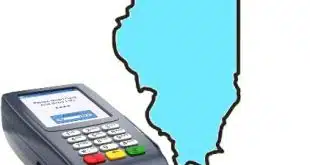At UL, we have seen both customers and merchants are experiencing an increased need for contactless payment options in brick-and-mortar stores. The current pandemic is a large factor in this, of course, but so also is the convenience and speed that contactless payments bring when compared to the traditional contact chip payment options.
However, implementing contactless payments in a way that optimizes benefits can be tricky. So let’s dig into some of the details.
It’s important when you start off to keep your goals in sight. This is true of any endeavor, of course, but with payments it’s important to remember that no one really wants to pay for anything. Payment is a process to get to what you want, to leave the store with the thing you came there to get. So, contactless payments are not something people want because of the payment side. It’s more the contactless side that’s of interest here.

More distinctly, it’s about speed and contact-free purchases, making sure the customer can be in and out as fast as possible— ideally without touching much more than the thing they are buying.
So, for contactless, this means thinking about what the customer does. Do they have to press buttons or screen icons to navigate to the correct payment option? Do you ask questions about the purchase that require customer input? These steps do not make for an ideal situation for contact-free payments, so you should consider how to minimize these physical interactions where possible. Larger stores may want to experiment with entirely contact-free checkout lanes, which reduce these physical interactions. Through A/B testing with other lanes, you can gain important information about what your customers are actually after with their checkout experiences.
Another aspect of this is to make sure the checkout process is as quick as possible. This is great for both the customer and your lane throughput, and is a key benefit of contactless payments. But have you actually checked how fast your payment process is? Is it quick enough, as quick as you expected? Faster or slower than your competitors’ systems? There are many aspects to a contactless payment, and any one of these can result in slower processing. So it’s worth checking and getting some help if things are not as fast as you would hope.
We tend to think of contactless payments as the next step in the evolution of card payments. This is true, but there is more to it than that. Contactless payments are a large step toward removing the physical card from card payments. A customer may make a contactless payment using a watch, a ring, a sticker, or a phone. This can have an impact on how you train your staff and implement your payment terminals. Don’t always expect the customer to hand you a payment card, as there may be no card involved!
This disconnect from payment cards also speaks to where we may be heading with payments. If you are planning to implement contactless for the first time, it may be worth considering the range of payment options available. The days of the card may be numbered. When cards are gone, will you be able to support the methods customers will want to use then?
—Andrew Jamieson is director of technology and security for UL’s identity management and security division.




